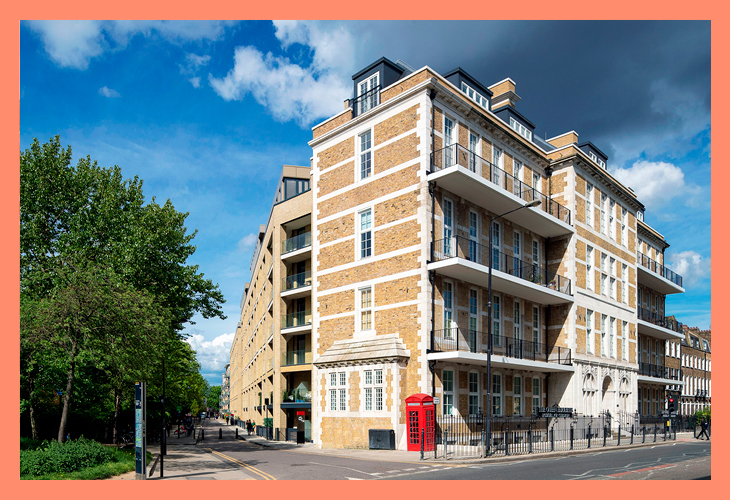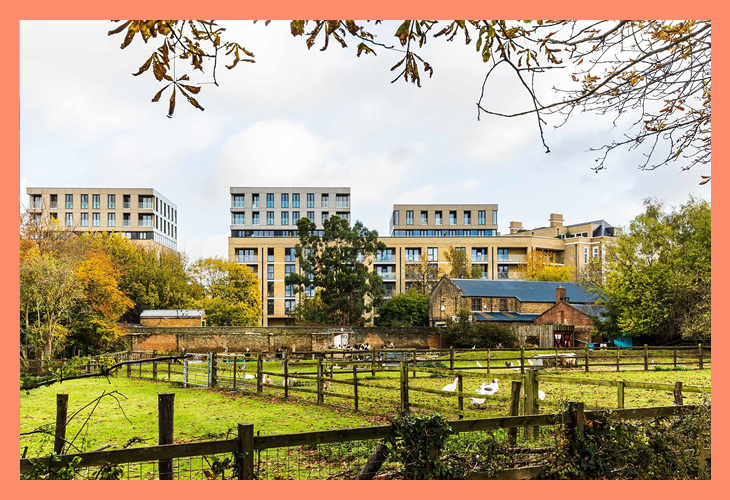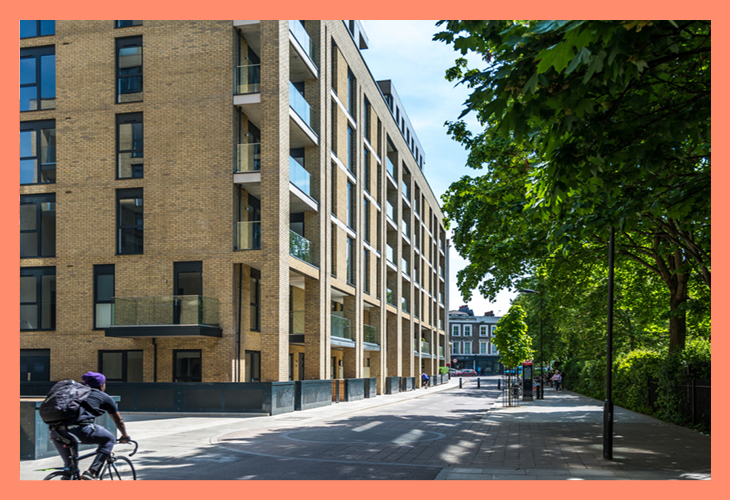HTA@50 - Queen Elizabeth Hospital
The Queen Elizabeth Children’s Hospital regeneration site sits adjacent a conservation area opposite Haggerston Park on the border of Tower Hamlets and Hackney in London. The GLA and Tower Hamlets were keen to return the site back to use after a long period of abandonment, and to maximise the development potential and community benefits of this key location.
The design of the buildings emerged from an understanding of the value of its surrounding context, and the resulting proposals respond sensitively, through scale, material choices, the retention, and integration of existing elements of significant heritage value. The design team worked closely with heritage consultants to devise a scheme that has retained and restored the iconic Hackney Road facade. The new proposed elevations are all designed to respond to the street scene in unique ways both in terms of scale and architectural articulation, and the resulting scheme represents a seamless integration with the retained Hackney Road Building. The dominant brick of the proposed elevations has been chosen to complement the existing stock with the stone banding of the Hackney Road façade echoed in the detailing of the new facades along Goldsmith’s Row. Above the six-storey datum that ties-in with the parapet of the retained Hackney Road façade, sit 4 pavilions clad in lightweight anodised aluminum cladding.
The urban design has created distinctive blocks which stitch into the existing fabric by responding to the mass and scale of neighbouring residential buildings. Two new pedestrian links have been created to provide better access to Haggerston Park for the existing residents to the East as well as connecting them to the new residents of the neighbourhood. In response to the prevailing local needs, the proposals have been designed with family accommodation as a key consideration with the majority of two storey family dwellings located at ground level with street doors providing easy access to the adjacent park, individual rear gardens opening out into the private communal courtyards.
The design team met fortnightly with the construction team to agree key details and review procurement issues during the development of the planning application. The surety in detailing and pricing that this process afforded has meant very little deviation from the design aspiration has occurred during the construction period resulting in the high quality architecture and detailed execution the design aspired to. The GLA has commended the scheme as an exemplar of the collaborative design process and partnering capable of unlocking the potential of abandoned inner-city brownfield sites to provide much-needed housing.













